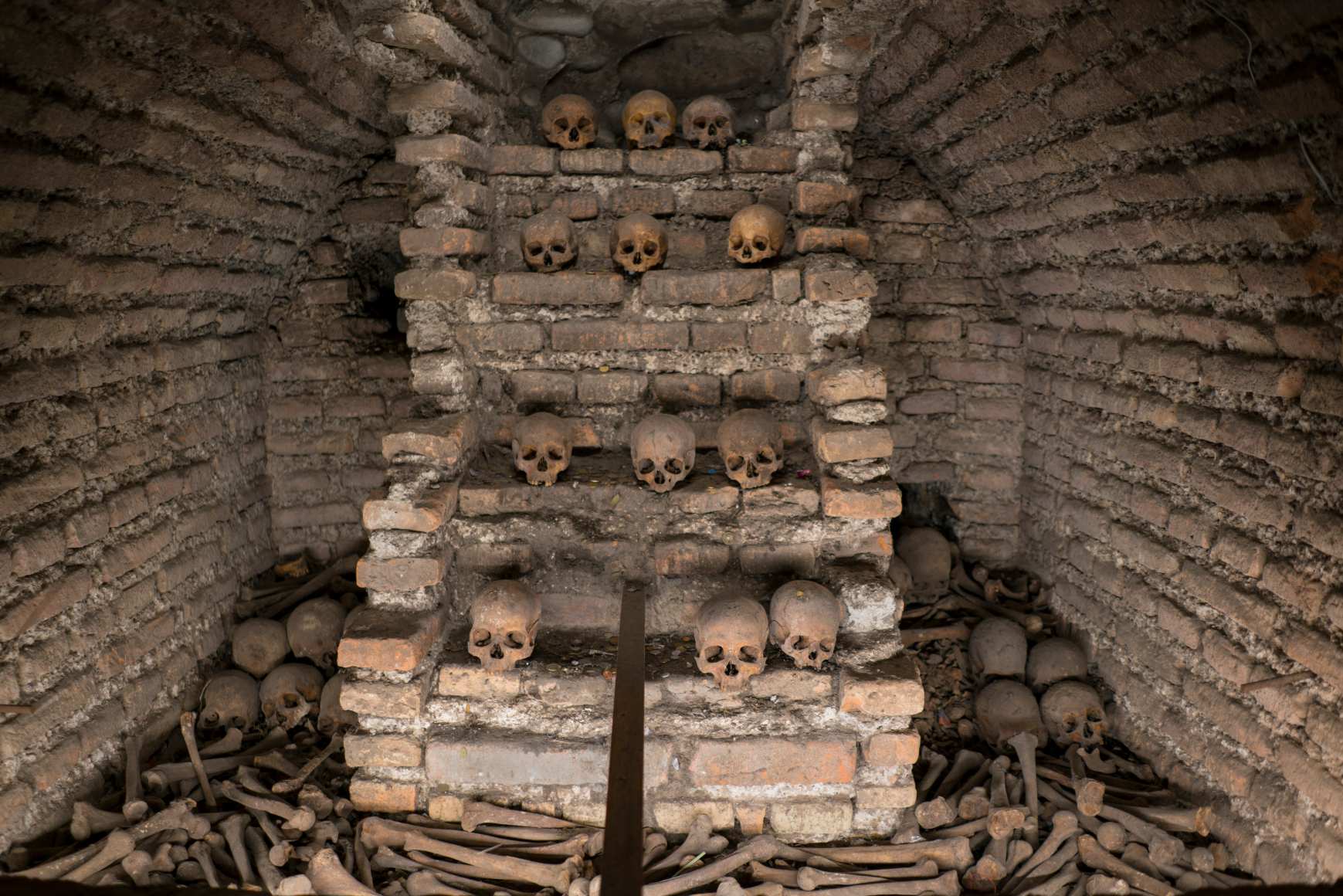The forgotten Catacombs of Lima
Within the basement of the Catacombs of Lima, lie the remains of affluent residents of the city who held the belief that they would be the final ones to find eternal rest in their expensive burial sites.
In the heart of Lima, Peru, lies a hidden treasure – the catacombs beneath the Basilica and Convent of San Francisco. These ancient tunnels, built by the Franciscan order in 1549, served as the city cemetery during the Spanish colonial era. The catacombs remained forgotten for centuries until their rediscovery in 1951, and today, they stand as a testament to the rich history and cultural heritage of Lima.

Catacombs of Lima: The construction and purpose
In 1546, the construction of the Basilica and Convent of San Francisco commenced, with the catacombs being an integral part of the design. These underground chambers were built to support the convent in the event of an earthquake, which was a constant threat in the region. The catacombs were carefully constructed to provide stability and protection, ensuring the safety of the inhabitants above ground.
The city cemetery
During the Spanish era of Peru, the catacombs served as the primary cemetery for the city of Lima. The Franciscan monks laid the deceased to rest within the underground chambers, and over time, the catacombs became the final resting place for approximately 25,000 individuals. From the common folk to the wealthy and influential, people from all walks of life found their eternal abode in these hallowed grounds.
Closure and rediscovery
The use of the catacombs as a cemetery came to an end in 1810, following the Peruvian War of Independence. General Jose de San Martin, a key figure in Peru’s fight for independence, banned the use of the cemetery, and the catacombs were closed off. For many years, the existence of these underground passageways remained forgotten until their serendipitous rediscovery in 1951.
Unveiling the mysteries
The underground complex

The catacombs beneath the Basilica and Convent of San Francisco are not limited to the convent grounds alone. They stretch beneath Lima, connecting various landmarks such as the Government Palace, the Legislative Palace, and the Alameda de los Descalzos on the other side of the Rímac River. These interconnected tunnels served as a means of transportation and communication, linking important buildings and providing a hidden network beneath the city’s surface.
Mapping the unknown
Despite attempts to map the entire complex in 1981, the true extent of the catacombs remains a mystery. The underground labyrinth extends beyond the imagination, eluding comprehensive exploration and documentation. The tunnels that lead to different points in the capital’s center continue to intrigue historians and archaeologists, leaving them with the daunting task of unraveling the secrets hidden within the dark recesses of the catacombs.
Discoveries within the depths
During explorations of the catacombs, a crypt believed to have served as an ammunition depot was unearthed. Another hypothesis suggests its connection to the Desamparados Church, built by Viceroy Pedro Antonio Fernandez de Castro, 10th Count of Lemos. This crypt and other chambers within the catacombs contained not only human remains but also valuable artifacts and treasures, hinting at their purpose beyond being a mere cemetery. Experts commissioned by the Peruvian State believe that the catacombs served as a means of protecting the area’s locals against piracy and safeguarding valuable possessions.
Preserving history
A heritage monument
The Basilica and Convent of San Francisco, along with its catacombs, holds immense historical and cultural significance. It is considered one of the most important heritage monuments in the historic center of Lima. In recognition of its importance, UNESCO declared the Historic Center of Lima, including the San Francisco complex, a World Heritage Site on December 9, 1988. This prestigious designation solidifies the catacombs’ place in history and emphasizes the need for their preservation and protection.
From cemetery to museum
In 1950, the catacombs were reopened as a museum, allowing visitors to explore this subterranean world and learn about Lima’s past. The bones of the estimated 25,000 individuals interred within the catacombs are organized into different rooms based on their type, creating a unique and thought-provoking display. Some of the bones are arranged in artistic patterns, highlighting the artistic sensibilities of the Franciscan monks who carefully laid them to rest. This juxtaposition of death and art serves as a poignant reminder of the impermanence of life and the enduring beauty of human creativity.
Final words
The forgotten Catacombs of Lima stand as a witness of the rich history and cultural heritage of the city. From their construction in the 16th century to their closure as a cemetery in the 19th century, and their rediscovery in the 20th century, these underground chambers have witnessed the ebb and flow of time. Today, they offer a glimpse into the past, allowing visitors to connect with the stories of those who came before. The catacombs of Lima beckon adventurers to explore their hidden depths, unraveling the mysteries that lie beneath the surface and preserving the memory of a bygone era.
Related Post
A shocking documentary proves that mermaids do exist
SHOCKING Revelation: Thuya, Mother of Queen Tiye, Was the Grandmother of Akhenaten and Tutankhamun—What Ancient Egyptian Secrets Did She Leave Behind?
Breaking News: Astonishing Discoveries at Karahan Tepe Confirm an Extraterrestrial Civilization is Hiding on Earth, and NO ONE Knows!
Breaking News: Researchers FINALLY Discover U.S. Navy Flight 19 After 75 Years Lost in the Bermuda Triangle!
NASA’s Secret Investigation: Uncovering the Astonishing Mystery of the UFO Crash on the Mountain!
Explosive UFO Docs LEAKED: Startling Proof That Aliens Ruled Ancient Egypt!